On View
9 Trailblazing Female Painters of the 19th Century You Really Should Know About
See the powerful paintings of the women who went to Paris and refused to be silenced by the male-dominated art world.

See the powerful paintings of the women who went to Paris and refused to be silenced by the male-dominated art world.

Sarah Cascone

Although there is a long way to go before men and women achieve parity in the art world, female artists have undoubtedly made great strides in recent decades, with far greater representation at museums, galleries, and international exhibitions. But today’s contemporary female artists likely wouldn’t be where they are today were it not for their 19th century predecessors who flocked to Paris to pursue an education in the arts. Dozens of them are now emerging from the shadows, thanks to new research for a show now on at the Clark Institute in Williamstown, Massachusetts: “Women Artists in Paris, 1850–1900.”
France’s capital city called to artists throughout the 1800s, a beacon of light and culture that drew in painters and sculptors from around the world its salons and academies. Among them were many women—some familiar names, such as Mary Cassatt (1844–1926), Berthe Morisot (1841–95), and Rosa Bonheur (1822–99), but many others you might not know, their names lost in obscurity.
Esther Bell, who coordinated the exhibition’s presentation at the Clark, told artnet News that “Women Artists in Paris” included “paintings that I had not seen before and that really surprised me in their quality and in their power.” She stressed that: “In many ways this exhibition is about rewriting the history of art to include those names that have fallen away over time… it’s important that our visitors are meeting artists who they have not met before.”
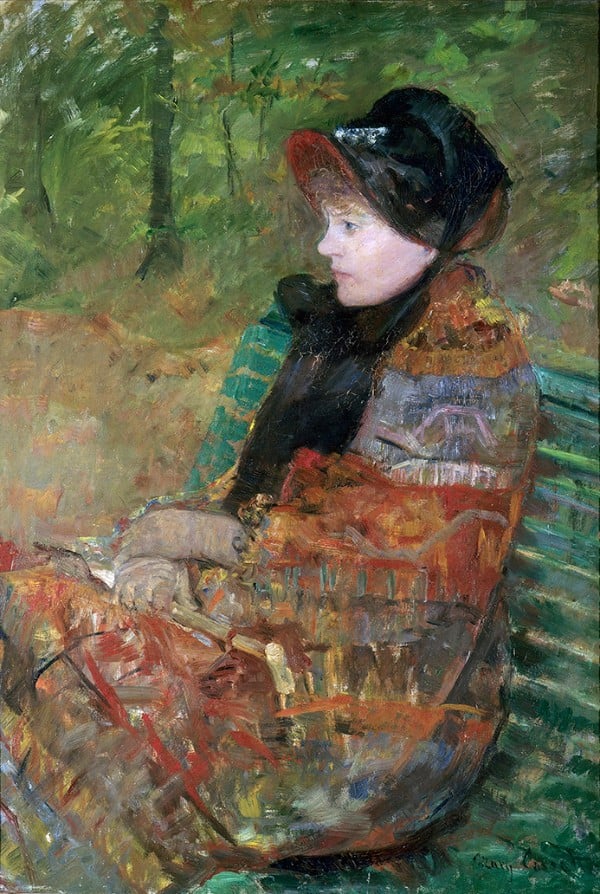
Mary Cassatt, Autumn, Portrait of Lydia Cassatt (1880). Courtesy of Petit Palais, Musée des Beaux-Arts de la Ville de Paris. Photo by Bulloz, ©RMN-Grand Palais/Art Resource, New York.
The women who bravely paved the way for the modern-day counterparts are largely forgotten, mere footnotes in the art history textbooks. “Women Artists in Paris” seeks to change that, shining a light on 37 women from 11 countries who studied art in Paris in the second half of the 19th century. The exhibition, organized by the American Federation of Arts and curated by Laurence Madeline, previously appeared at the Denver Art Museum (October 22, 2017–January 14, 2018) and the Speed Art Museum, in Louisville, Kentucky, (February 17–May 13, 2018).
“The woman artist is an ignored, little-understood force, delayed in its rise!” said Hélène Bertaux, founder of Paris’s Union des Femmes Peintres et Sculpteurs in her inaugural address in 1881. “A social prejudice of sorts weighs upon her; and yet, every year, the number of women who dedicate themselves to art is swelling with fearsome speed.”
The union served a growing community of women artists, undeterred by the challenges they faced. “There had always been women painters, women sculptors, women ceramicists… but this moment in the late 19th century was an opportunity for women to be able to take formal classes and to enter art academies, to elevate their craft and train in serious ways,” Bell said.
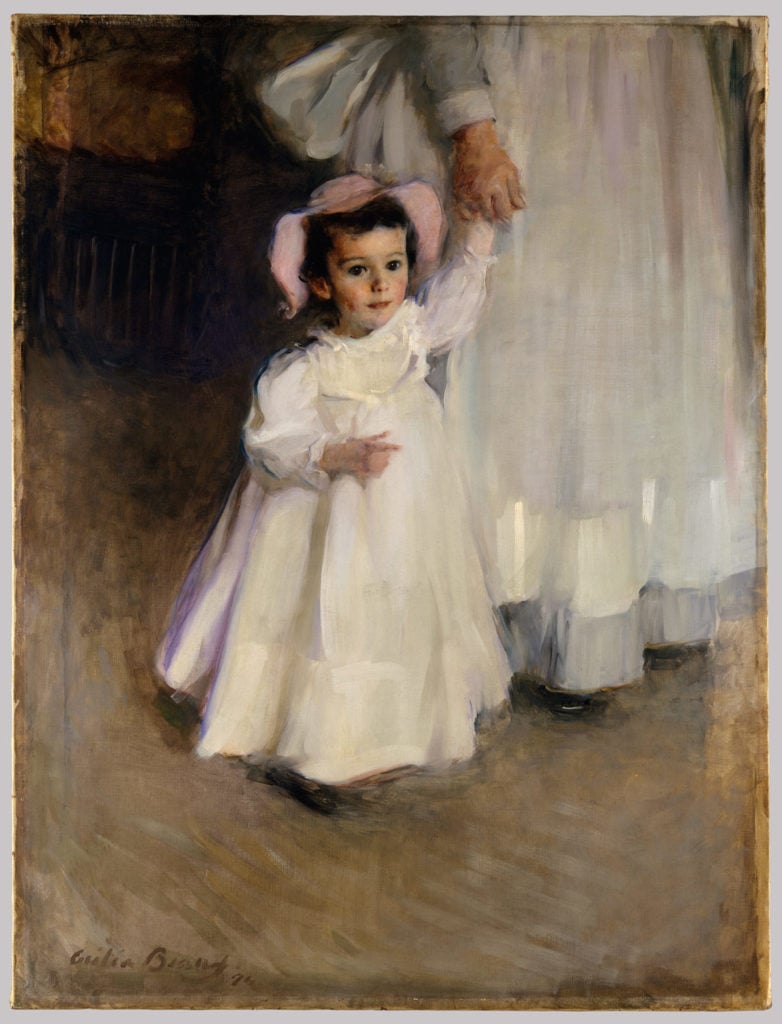
Cecilia Beaux, Ernesta (Child with Nurse), 1894. Courtesy of the Metropolitan Museum of Art, Maria DeWitt Jesup Fund, 1965.
But even with new opportunities open to them, she admitted, “women were systematically excluded from the structures that could train them.” Unable, even, to go out in public unchaperoned, women weren’t admitted by the government-run École des Beaux-Arts, for instance, until 1897, forcing women to follow less official channels, and to create spaces of their own.
“It is enough to make one cry with rage,” wrote Marie Bashkirtseff, a Ukrainian artist featured in the exhibition, in 1878, in her posthumously published journal. “Why cannot I go and study there?”
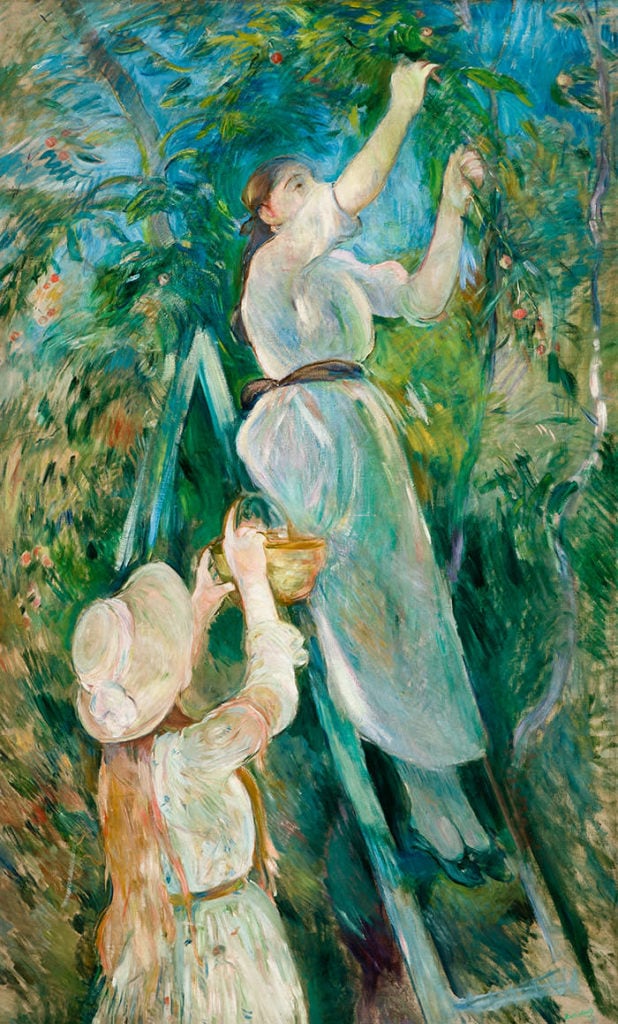
Berthe Morisot, The Cherry Tree (1891). Courtesy of Bruce and Robbi Toll.
There were several reasons for women’s exclusion from the institutional structures that provided entry to the art world. Women were simultaneously viewed as a threat—male artists hardly needed more competition in an already-crowded field—and as naturally inferior and incapable of creative genius. While it was useful for women to draw recreationally, or even to make a living with decorative china painting or other stereotypically feminine work, they were were not taken seriously as professional artists.
Bell called Bashkirtseff’s memoirs “a wonderful entryway into this exhibition, because it helps you understand the psychology, and the types of obstacles these women were facing.”
Where the state-run academy was free, women had to pay for their education, taking private lessons or women-only classes at institutions such as the Académie Julian, founded by Rodolphe Julian (1839–1907). “One could argue he was a feminist in his own right, but he was also an entrepreneur,” said Bell. “He understood there was a market for an academy that specialized in training women, and that they would travel from all over the world to this studio.”
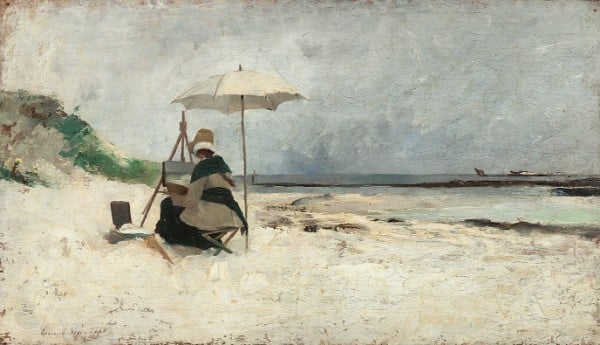
Emma Löwstädt-Chadwick, Beach Parasol, Brittany (Portrait of Amanda Sidwall), 1880. Courtesy of a private collection, Stockholm. Photo by Lars Engelhardt.
But even when they found schools that accepted them, women were forbidden to work with nude models, limiting their ability to create more prestigious history paintings. And when artists took over for the state running the official Paris salon in 1881, the number of women represented in the annual show fell by half. But despite the challenges, many women excelled, winning well-deserved honors and praise for their work.
“Every object in this exhibition was chosen because of its quality and its success as a painting and fine art object,” Bell insisted. “Absolutely these women measure up to their male counterparts!”
“Every single one of these artists could have a powerful monographic exhibition,” she added, noting that she hopes the current show will be a stepping stone for further recognition for its subjects. “It is the responsibility of institutions to continue this dialogue in a sustained way, not just having the exhibition and forgetting about these artists again, but to really keep seeking out opportunities to highlighting this work, encourage art historical inquiry, and to engage our public with the work of these women.”
Below, learn more about nine of the women in the show.

Marie Bracquemond, On the Terrace at Sèvres (Sur la terrasse à Sèvres), 1880. Courtesy of the Musée du Petit Palais, Geneva.
Background: Thoroughly working class and largely self-taught, Marie Bracquemond didn’t have the access to arts training typically offered to the upper bourgeoisie. She is said to have made her first painting, a portrait of her mother, using dyes she made herself from flowers. A family friend, recognizing her talents, then bought her a set of watercolors.
Work: Bracquemond’s disciplined drawing style has been likened to that of Jean-Auguste-Dominique Ingres (1780–1867), with whom she briefly studied. She left his studio “because he doubted the courage and perseverance of a woman in the field of painting.”
Career Highlight: Bracquemond was one of only five women, along with Cassatt and Morisot, to show with the Impressionists (two others participated just once, under pseudonyms). She often painted her sister, Louise, and scenes from parks and gardens, public outdoor spaces that offered women greater freedom of movement.
Challenges: “Hers is one of the tragic stories,” admitted Bell. “She was an incredibly talented artist, and she had so much promise, but she was married to someone who actively discouraged her. “Bracquemond’s career didn’t blossom or have the longevity of other artists who had greater support from their familial circles.”
In 1866, Bracquemond married Félix Bracquemond, described by Richard Kendall’s essay in the exhibition catalogue as “self-absorbed and domineering.” Her last exhibition was at the final Impressionist show in 1886; after that she essentially gave up her work as an artist.
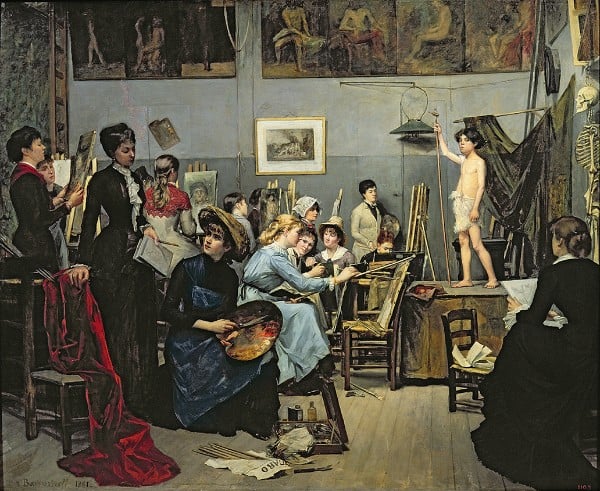
Marie Bashkirtseff, In the Studio (1881). Courtesy of the Dnipropetrovsk State Art Museum, Ukraine.
Background: Born in the Ukraine to wealthy nobles, Marie Bashkirtseff moved with her family to Paris and studied at the Académie Julian from 1877 to 1884. Bashkirtseff originally wanted to pursue singing, but was unable to do so due to the tuberculosis that ultimately claimed her life.
Work: Bashkirtseff painted the best-known image of the Académie Julian, the 1880 canvas In the Studio, showing women artists working from a live model.
Career Highlight: She exhibited in Paris’s Salon in the 1880s, winning an honorable mention in 1883. After she died at the young age of 25, Bashkirtseff became famous for her posthumously published Journal, which she began writing at the age of 13, describing her life in the studio.
Challenges: In her diary, expressed her frustration with the limitations of Parisian society: “What I long for is the freedom of going about alone, of coming and going, of sitting on the seats of the Tuileries, and especially in the Luxembourg, of stopping and looking at the artistic shops, of entering churches and museums, of walking about the old streets at night; that’s what I long for; and that’s the freedom without which one cannot become a real artist.”
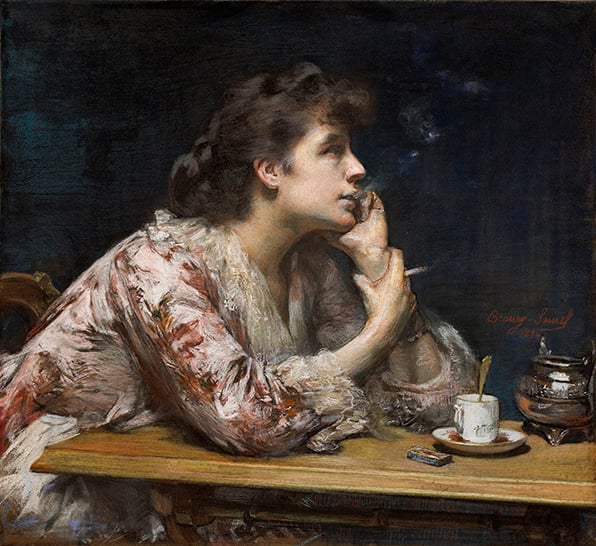
Amélie Beaury-Saurel, Into the Blue (Dans le bleu), 1894. Courtesy of the Musée des Augustins, Toulouse/American Federation of Arts.
Background: Born and partially raised in Spain, Amelie Beaury-Saurel added her mother’s last name to her own, in honor of her maternal ancestors.
Work: “She has this incredible pastel in our exhibition. It’s a work on canvas, psychologically charged and impeccable in its execution,” said Bell. Into the Blue depicts an unrepentantly modern woman, smoking and drinking.
Career Highlight: Her work won awards at the 1889 and 1900 Expositions Universelles, as well as the 1891 Black and White Salon in Paris.
Challenges: Beaury-Saurel married Rodolphe Julian, founder of the Académie Julian, where she became a teacher in 1895, having to balance her course load with her own career as an artist. She managed the school, with help from her nephews, after Julian died in 1907.
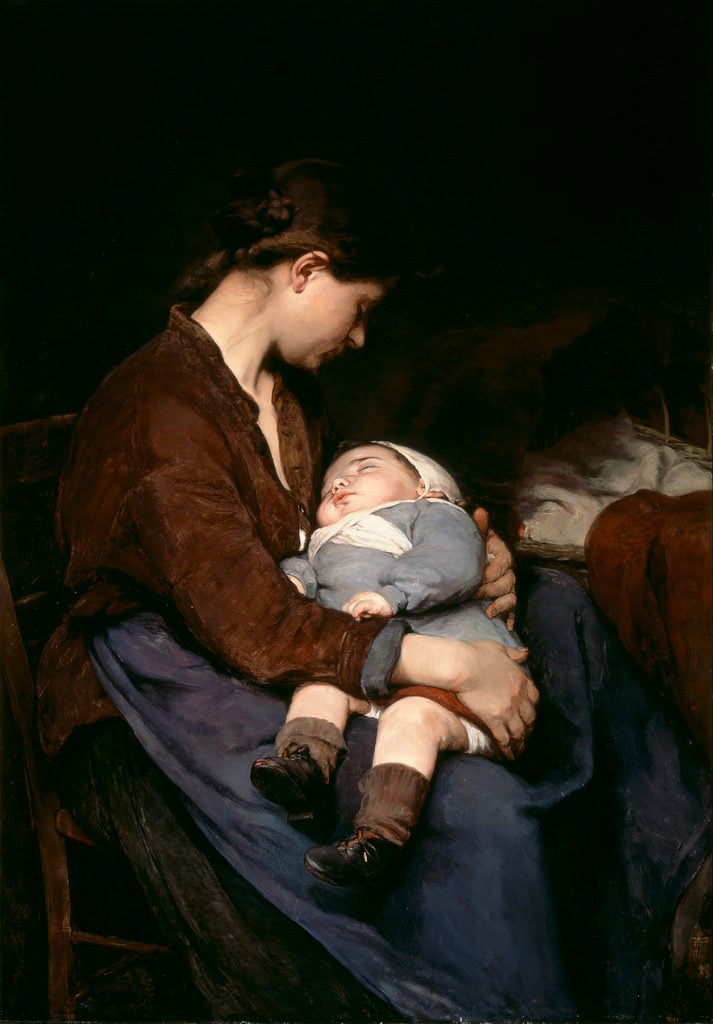
Elizabeth Nourse, A Mother (1888). Courtesy of the Cincinnati Art Museum.
Background: Born in Cincinnati, Elizabeth Nourse was one of only a handful of women admitted to the McMicken School of Design there. She turned down the chance to teach there, moving with her sister Louise to New York after their parents died in 1882. Five years later, the pair moved to Paris, where Nourse enrolled at the Académie Julian.
Work: Bell called Nourse “one of the great stars of the exhibition.” Her 1892 self portrait, which shows her at work on an unseen canvas, is a perfect illustration of the strength and determination one needed to succeed as a woman artist. “She’s staring out at the viewer, but very brazen and fierce looking,” Bell added.
Career Highlight: Her celebrated painting A Mother debuted at the Salon in 1888. “It was chosen to hang ‘on the line,’ which means it was being recognized as incredibly successful,” Bell added. “It was featured in five more exhibitions in seven years.… By 1914 it was hanging in Woodrow Wilson’s study in Princeton, New Jersey when he was governor.” Nourse was only the second woman named a member of the Société Nationale des Beaux-Arts.
Challenges: Nourse was able to make a living from her art despite having to support her sister, and not being able to rely on a family fortune, a husband, or a teaching job.
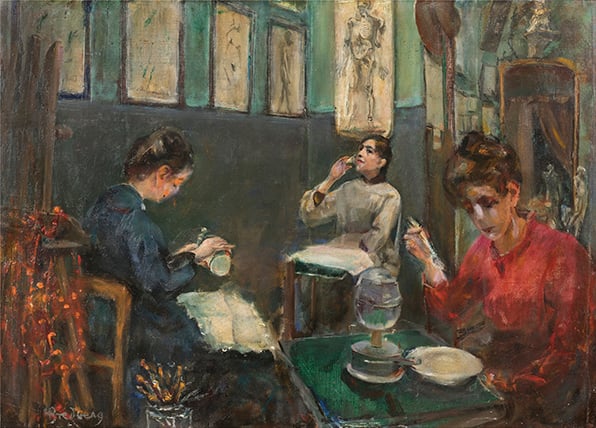
Mina Carlson-Bredberg, Académie Julian, Mademoiselle Beson Drinking from a Glass (circa 1884). Courtesy of the Dorsia Hotel, Gothenburg, Sweden/the American Federation of Arts.
Background: Mina Carlson-Bredberg began her artistic training with two Swedish artists, Kerstin Cardon and Amanda Sidwall. She later moved to Paris and attended the Académie Julian from 1883 to 1887.
Work: Carlson-Bredberg excelled at many genres of painting, from landscape to interiors to floral still lifes and religious scenes.
Career Highlight: She exhibited a number of portraits at the Salons of 1887 and 1890 and received honorable mention for a self-portrait at the 1889 Exhibition Universelle. In 1890 she returned to Stockholm and taught at the art school established by Elizabeth Keyser, a friend and classmate at the Académie Julian.
Challenges: When she was 20, Carlson-Bredberg’s family spotted her kissing a man, and the two were forced to marry, a union that lasted seven years and kept her from her art. She remarried in 1895, and again, her husband didn’t approve of her art career. She is said to have warned her nieces “Girls, remember to think how lucky you are not to be married!”

Louise Breslau, The Friends (1881). ©Musée d’Art et d’Histoire, Geneva
Background: Drawing was an escape from boredom for German-born Louise Breslau, who was sent to a convent as a sickly child. Soon drawn to Paris, she studied at the Académie Julian before opening her own studio after experiencing success at the Salon, where she first exhibited in 1879.
Work: Her portrait The Friends, of Breslau and her roommates, an opera singer and another artist, won an honorable mention at the 1881 Salon and toured Europe. “It’s a virtuoso performance of paint, of gesture, of still life, of portraiture,” said Bell of the “moving self portrait.”
Career Highlight: Breslau represented Switzerland at the 1889 Exposition Universelle, winning a gold medal. The state purchased three of her works from the Salons of the Société Nationale des Beaux-Arts, where she also served on the exhibition jury. Her work was so well-regarded that in 1901 she became the first foreign women to receive France’s Legion of Honor award.
Challenges: Despite the critical acclaim, The Friends wasn’t without its detractors. “It was also absolutely parodied and ridiculed in the press,” Bell admitted, noting that one searing caricature recasts the women as a trio of dogs. “It really strips these talented women of their agency. It’s a sobering reminder about the challenges these women were facing, especially as they put themselves out there publicly.”
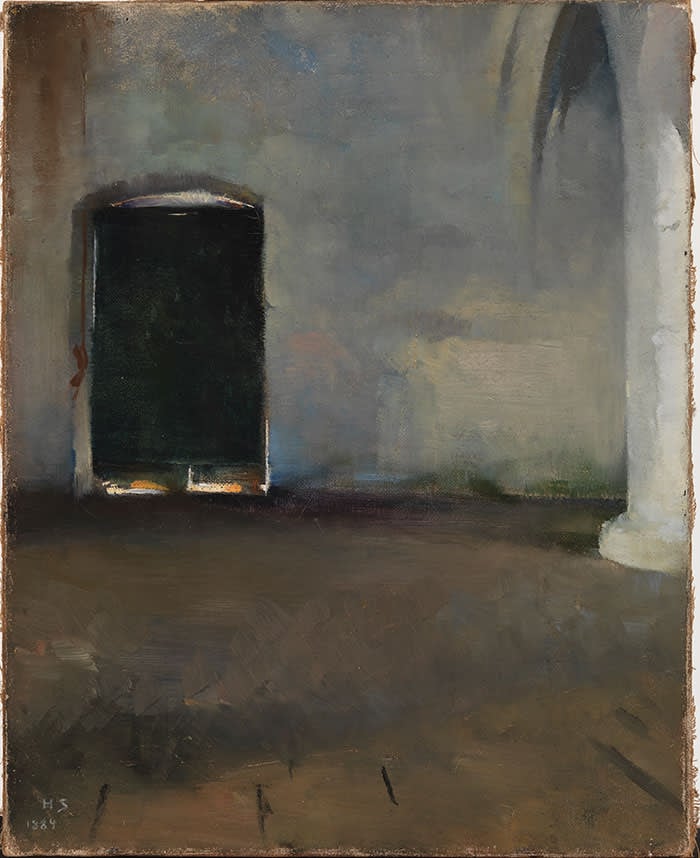
Helene Schjerfbeck, The Door (1884). ©Finnish National Gallery/Ateneum Art Museum, Helsinki.
Background: Helene Schjerfbeck was just 11 when she began studying at the Finnish Art Society Drawing School in Helsinki. She won a prize from the society in 1879, and received a grant to study in Paris the following year. She traveled around France, becoming close friends with the Austrian painter Marianne Stokes, and some years later enrolled at the Académie Colarossi.
Career Highlight: The only Finnish woman artist who took part in the Baltic Exhibiton in Malmö, Sweden, in 1914, Schjerfbeck exhibited work up until her death in 1946.
Challenges: In 1902, health problems cost her a job teaching drawing, and she spent a decade caring for her mother in a remote village, “contributing to her marginalization,” according to the exhibition catalogue. Institutions periodically stage exhibitions of her work, with a major traveling exhibition on the occasion of the 150th anniversary of her birth, but she remains undeservedly obscure outside of her native country.
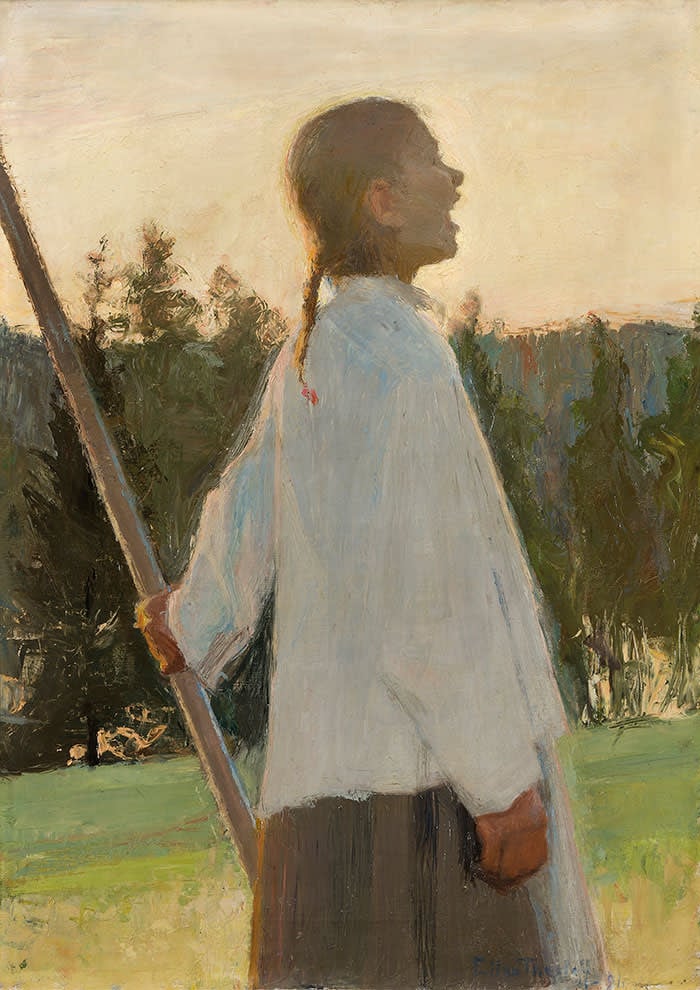
Ellen Thesleff, Echo (1891). Courtesy of the American Federation of Arts, ©Anders Wiklöf Collection Andersudde, Åland Islands. Photo by Kjell Söderlund.
Background: Ellen Thesleff was born in Helsinki and studied at a private Finnish painting academy beginning at age 16, before transferring to the Finnish Art Society Drawing School.
Work: As a young woman, Thesleff was influenced by Symbolism. After moving to Paris in 1891 to study at the Académie Colarossi, she helped formed Finland’s Septem group, which brought Impressionism to the Nordic country. Her painting Echo was a hit at the Finnish Art Society’s 1891 exhibition, called a “breakthrough” by the critics.
Career Highlight: Traveling frequently, Thesleff exhibited internationally, in Florence, Paris, Stocklhom, and St. Petersburg. She won a bronze medal at the 1900 Exposition Universelle in Paris.
Challenges: Thesleff was named an honorary member of the Artists Society of Findland and was awarded the Pro Finlandia medal by the Finnnish president in 1951, but has received little posthumous recognition, aside from a 1998 exhibition at the Helsinki Ateneum.
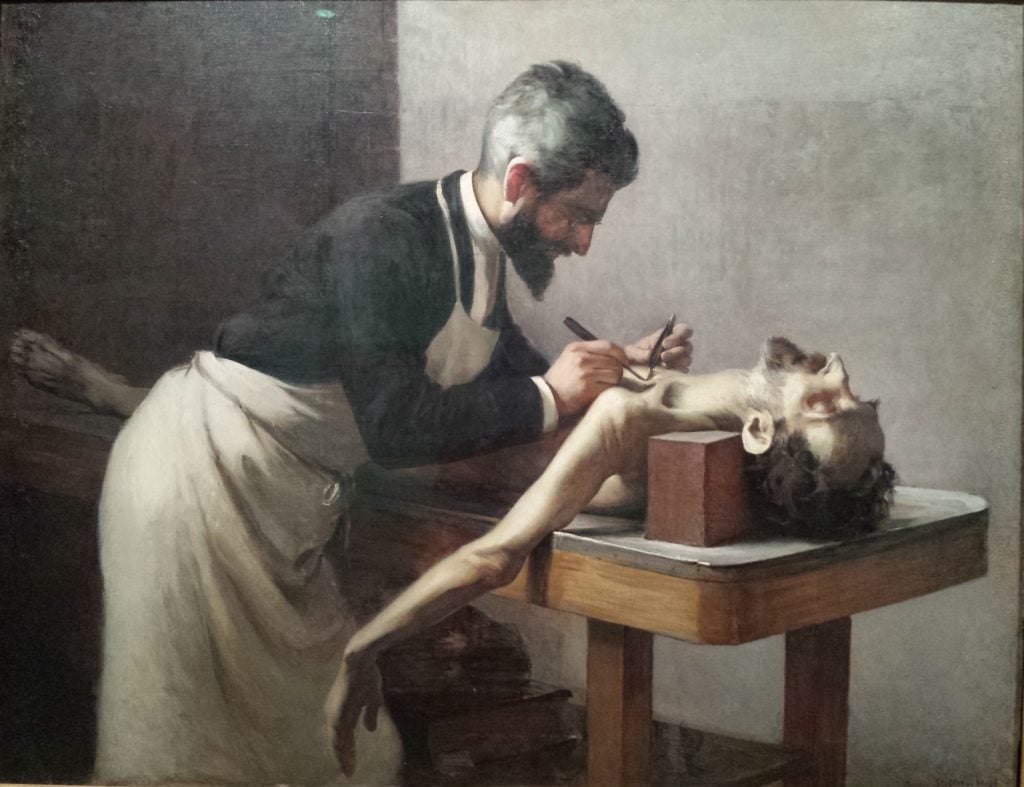
Annie Hopf, Autopsy (Professor Poirier, Paris), 1889. Courtesy of the Kunstmuseum Bern, Switzerland.
Background: Annie Hopf, who was born in Switzerland, moved to Paris in 1882, where she lived with another Swiss student, Ottilie Roderstein, who may have been her lover. “We still know very little about her biography,” admitted Bell. “We know that she exhibited, we know that she was in Julian’s studio, but she did not have the fame, the celebrity, of someone like Rosa Bonheur.”
Work: Despite the limited available details about Hopf’s career, she manages to make quite an impact in the exhibition with a single painting. “It’s an incredibly powerful canvas of a dead body on an autopsy table,” said Bell. Art historians have been able to identify the scientist depicted in the work, but how Hopf came to have access to the autopsy room remains a mystery.
Career Highlight: Hopf studied at the Académie Julian, and was a professor at the Berlin Arts Academy. She exhibited at the Salon between 1884 and 1890, and a the Swiss Society of Fine Arts in 1894.
“Women Artists in Paris, 1850–1900” is on view at the Clark Institute, 225 South Street, Williamstown, Massachusetts, June 9–September 3, 2018.